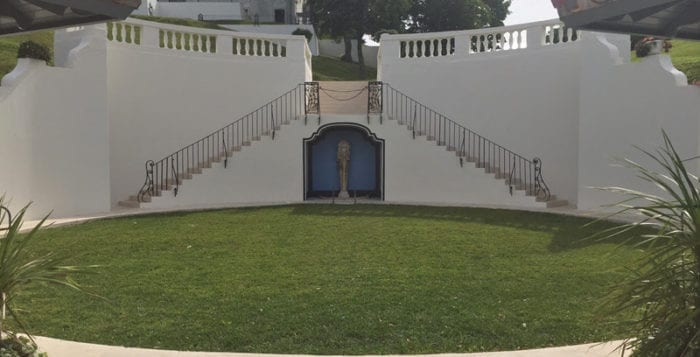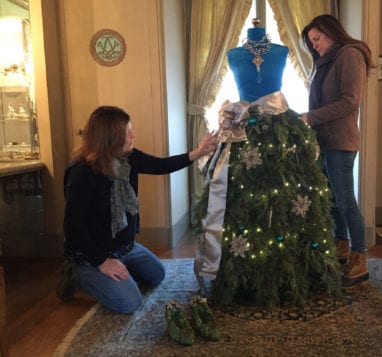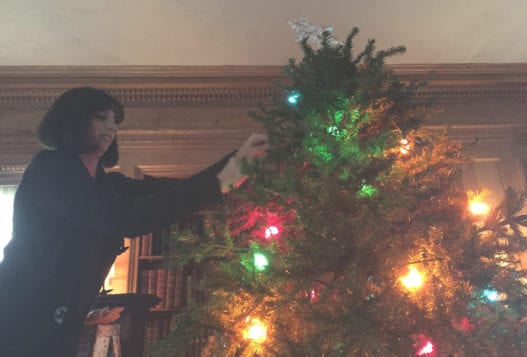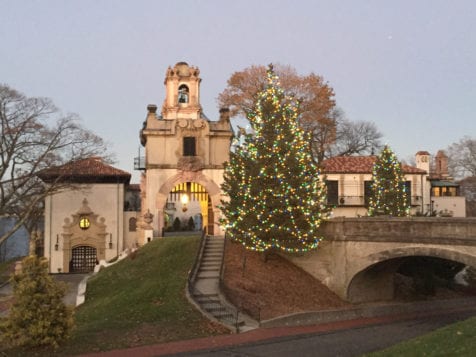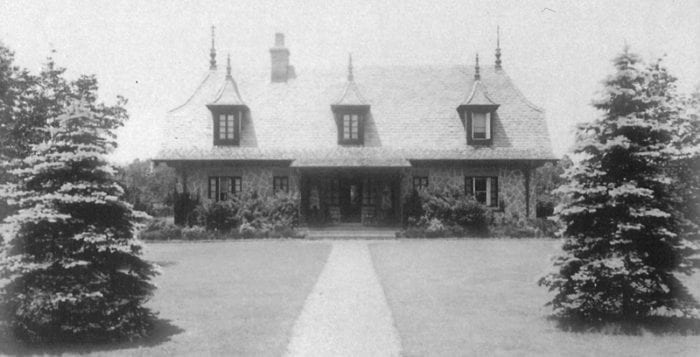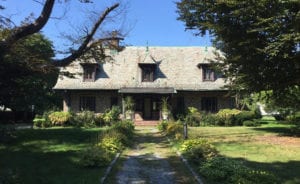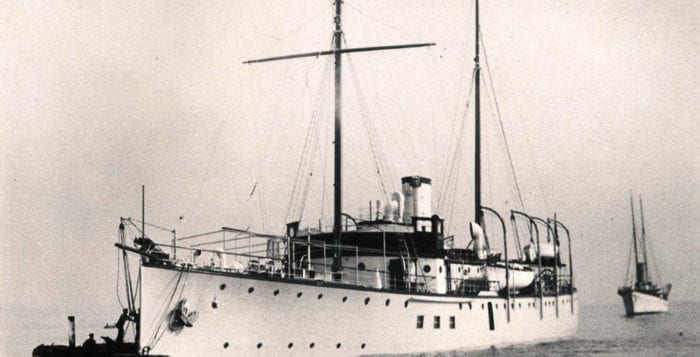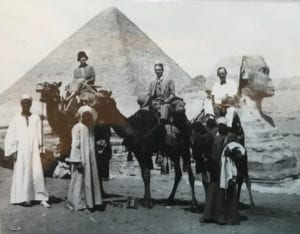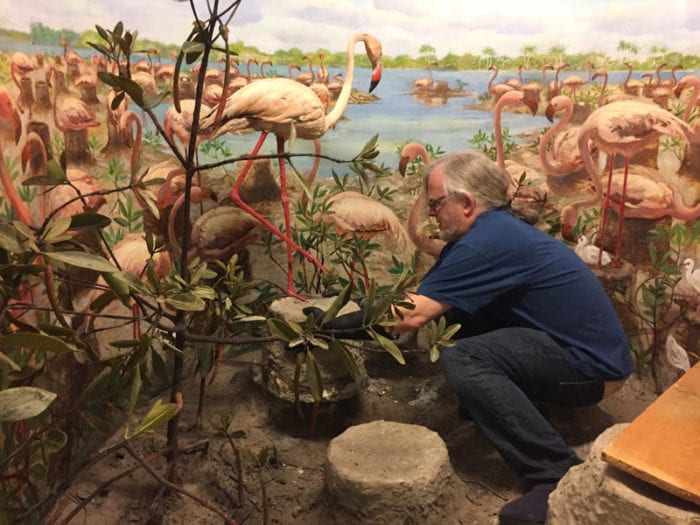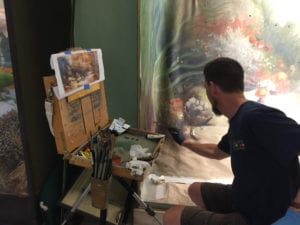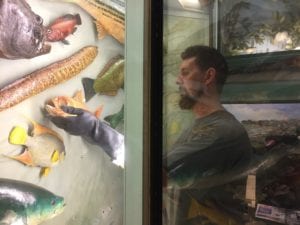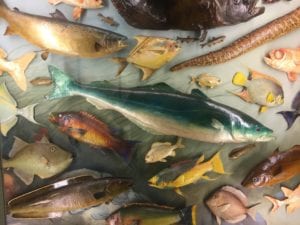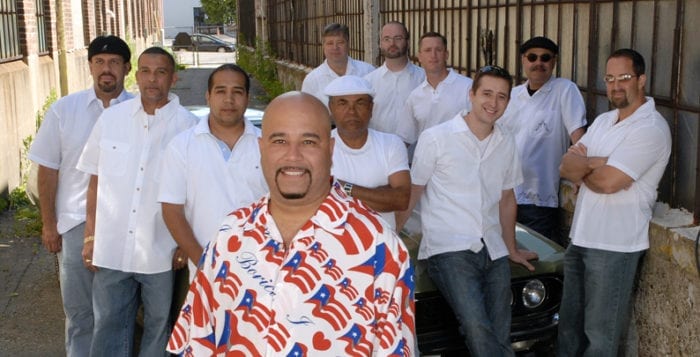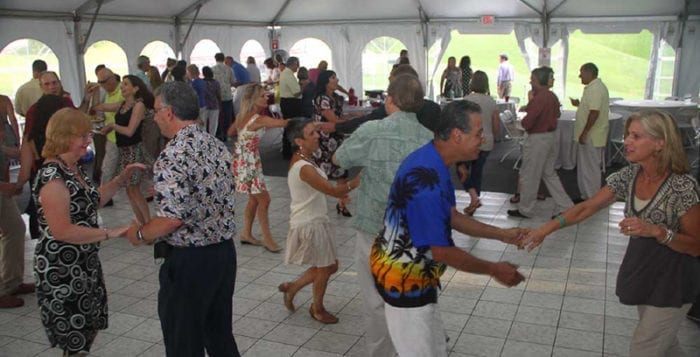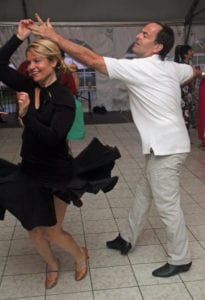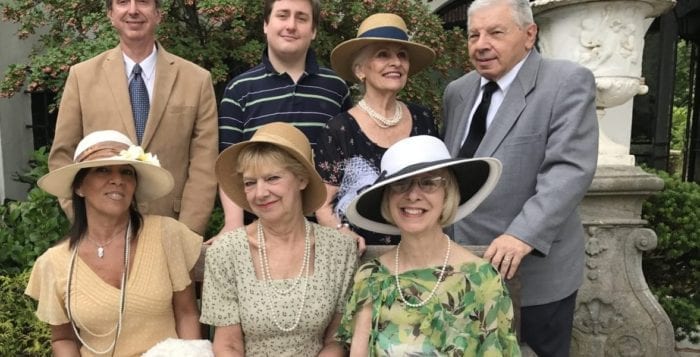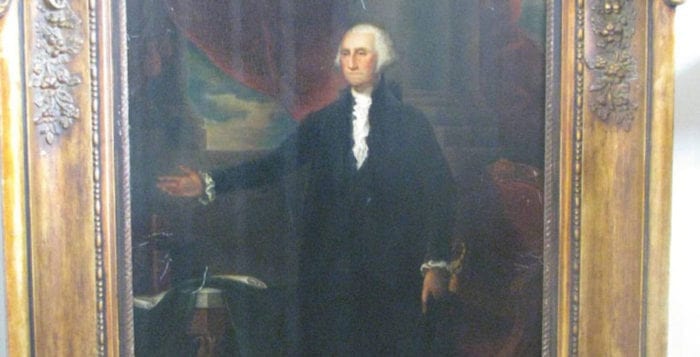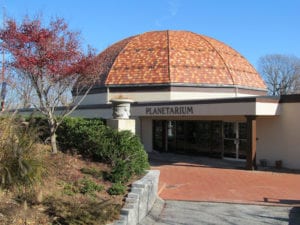When William K. Vanderbilt II created his Eagle’s Nest estate and mansion in the early twentieth century, he included a golf course, tennis courts and a saltwater pool with cabanas, overlooking Northport Bay.
Decades ago, the pool was filled in for visitor safety and today it is planted with grass. Earlier this summer, the Vanderbilt Museum restoration staff repaired and restored the pool and cabanas and, according to the original design, repainted them white. With the completion of the project, the museum has another singular, scenic location for receptions, parties and weddings.
The pool complex is built into the steep hillside, which made possible the imposing semicircular wall and double staircase that splits at a landing below the grand entry steps. The sides of the wall, which is crowned by a balustrade, step down several times. Each step is decorated with an urn of flowers.
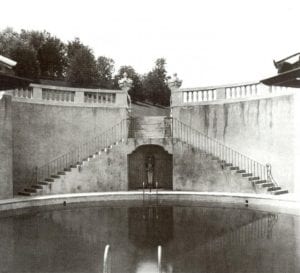 The double stairways, with elegant wrought-iron railings, wind down each side of the wall to the walkway that encircles the pool. On the walkway level, in the center of the wall, is a large niche that showcases a statue rising out of a shallow basin. The statue, which is also a fountain, is a neoclassical bearded man with a cherub standing on each shoulder.
The double stairways, with elegant wrought-iron railings, wind down each side of the wall to the walkway that encircles the pool. On the walkway level, in the center of the wall, is a large niche that showcases a statue rising out of a shallow basin. The statue, which is also a fountain, is a neoclassical bearded man with a cherub standing on each shoulder.
The staff also restored the twin cabanas adjacent to the waterfront edge of the pool. Crew members removed the deteriorating cabana roofs and constructed new ones from the remaining inventory of original, curved, Mediterranean-style ceramic tiles purchased by Vanderbilt’s architects. The carved wooden cabana doors, removed and stored for years, were rehung and repainted. Between the cabanas is a small terrace of bricks set in a herringbone pattern.
Several years ago, the Vanderbilt pool had an anonymous moment of fame on the silver screen. That moment had its beginnings in 2013 when, even in its deteriorated state, the pool design appealed to Australian movie director Baz Luhrmann.
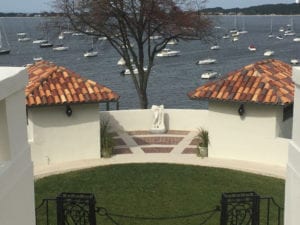
When Luhrmann was doing research for his film “The Great Gatsby” (2013) starring Leonardo DiCaprio, he and his production designer, Catherine Martin, visited some of the remaining Gold Coast mansions on the North Shore of Long Island. They spent an afternoon exploring and photographing the Vanderbilt estate, mansion and pool. Luhrmann was so impressed with the pool that he created a version of it and its graceful, curving twin staircases, for his movie.
A May 2013 Vanity Fair article detailed Luhrmann’s visit: In the film, Gatsby’s parties are centered around his circular pool, which later serves as the setting of a tragic climactic scene. During an extensive location scout of houses in Long Island, Martin says, she, Luhrmann, and their crew stumbled upon their inspiration at Eagle’s Nest, a Spanish Revival–style mansion that Vanderbilt began building in 1910.
Even though the pool had been filled in with grass and dirt after a hurricane, she says, Luhrmann was so taken by the property that he had his music supervisor and an assistant spontaneously act out the pivotal scene right there. “The video that Baz shot that day is almost identical to the scene that ended up in the movie,” she said.
The Suffolk County Vanderbilt Museum, 180 Little Neck Road, Centerport is open on Tuesdays, Saturdays and Sundays from noon to 4 p.m. through April 2, 2018. Mansion tours are given at 12:30, 1, 2, 3 and 4 p.m. For more information, call 631-854-5579.
Photos courtesy of Suffolk County Vanderbilt Museum

